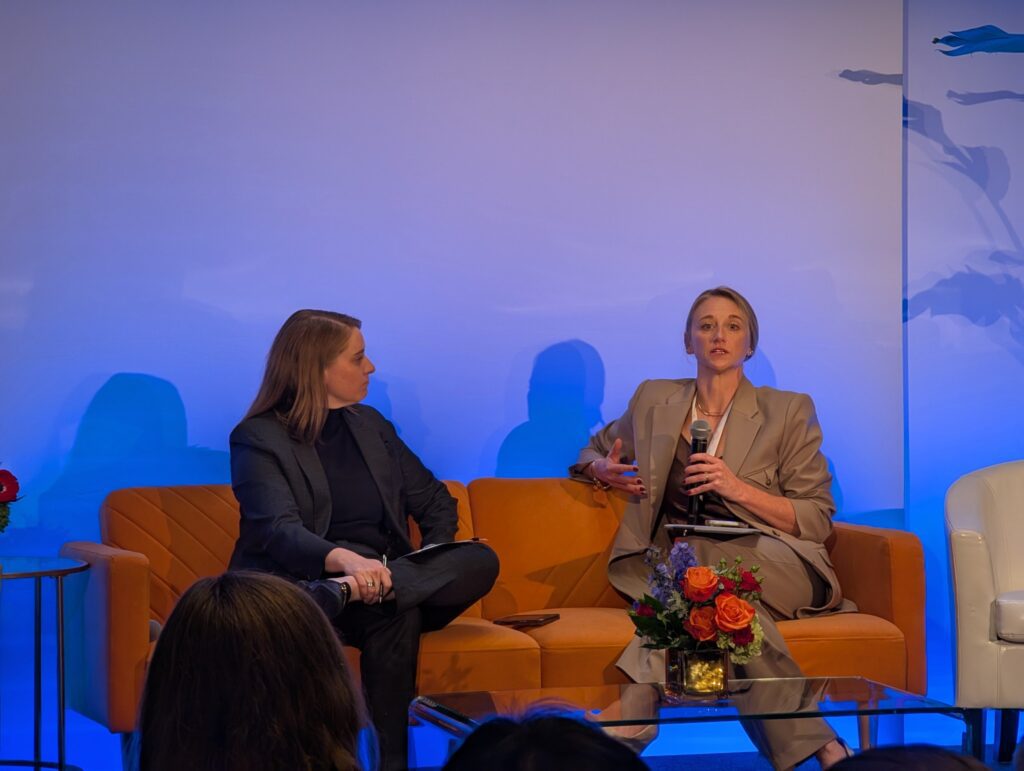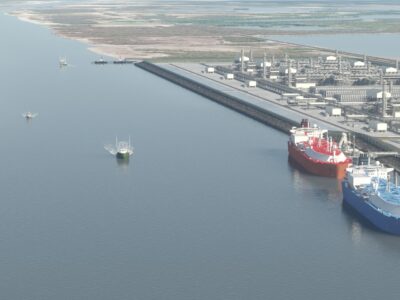Christina Baworowsky, senior vice president of policy and advocacy for the Citizens for Responsible Energy Solutions (CRES) Forum, discussed policy and advocacy with leaders from Ford Motor Company, GE Vernova, Mitsubishi Heavy Industries America, Crux Climate, and Turn Forward during the first Smart Brevity session of National Clean Energy Week.
Each of the companies showcased during the session is advancing significant domestic projects. Jessica Carter, head of federal government affairs at Ford Motor Company, opened by saying, “Ford is the American company.” The company has 57,000 United Auto Workers (UAW) employees, with new plants focused on batteries and electric vehicles in Michigan, Tennessee, and two in Kentucky. She also highlighted the importance of a strong domestic auto industry: “If you want a strong economy, you want a strong auto industry.”
Cole Simons, managing director at GE Vernova, the energy spinoff of General Electric (GE), noted, “We’re the only American company who can build you whatever you need for the grid, whenever you need it, and wherever you need it.” About 25% of the world’s electricity runs off of GE Vernova’s generation equipment, and its domestic manufacturing processes include 18 manufacturing facilities and nearly 20,000 employees. So far this year, the company has announced approximately $720 million in new domestic manufacturing investments.
Kendall Stephenson, government relations manager at Mitsubishi Heavy Industries America, noted that with around 450 different product lines and 10,000 employees working in manufacturing facilities or offices spanning more than 30 states, “you can see the Mitsubishi Heavy name on anything from heavy payload rockets, forklifts, and then the gas turbines that deliver electricity right to your homes.” Plus, the company is poised for growth, having recently opened a data center solutions division and announced plans to double its gas turbine production capacity within the next two years.
Alfred Johnson, co-founder and CEO of Crux Climate, a capital markets platform for the clean economy, noted that after starting in transferable tax credits, the company has since expanded into providing construction bridge financing capital and making investments into a variety of American projects, backed by about $80 million in fundraising from companies like Mass Mutual Ventures and Liberty Mutual Strategic Ventures.
Finally, Hillary Bright, executive director at Turn Forward, an independent nonprofit focused on offshore wind, discussed the importance and future of that industry more generally. As she pointed out, wind energy is inherently connected to manufacturing. The industry is “not only attracting new manufacturing to the U.S.,” she said, but “more important, “is providing additional revenue streams and revitalization of some of the the manufacturing facilities that we have here in the U.S. already, in large part in the Gulf region and in the South,” and really providing a cross-country economic and jobs benefit beyond the coasts. Offshore wind can build off the legacy of oil and gas, to fill in the gaps left by the fossil industry “to truly get a stabilized grid that can deliver the 24 hour reliability and the price the consumers need to be able to continue functioning in the U.S. with their day-to-day needs.” Additionally, it will need to do so to compete with China and remain competitive in the artificial intelligence (AI) race.

Photo Courtesy Turn Forward
While each of these companies comes from a very different industry background, there was some agreement around the policies they have benefited from or those they still want to see implemented. Most of the session participants mentioned permitting reform in their answers. Carter pointed out that “in the end, that’s where it’s all going to start” because companies like Ford need to have the certainty and speed to build new plants. Simon agreed that permitting reform “is truly how you create a long-term future” in which companies have the ability “to easily and quickly deploy the electricity generation technologies that make sense where they are needed.” Stephenson added that while it currently takes too long to build energy projects and pipelines, “there’s a lot of great momentum from the executive branch and Congress to really support and prioritize permitting reform.”
Participants often highlighted policy certainty, particularly from tax credits like the Advanced Manufacturing Production Tax Credit (Section 45X), in parallel with permitting reform. Johnson highlighted how essential the 45X tax credit has been for his company in particular: “It has become one of the largest segments of the transferable credit market. It went from 10% of the market last year to about 20% in the first half of this year. So it is the fastest growing category.” This transferability, accordingly, has “unlocked a huge amount of capital into these projects” for manufacturers who are thinking about costs and planning. Carter agreed: “I think it all comes down to jobs, jobs, jobs, and the ability to compete in the global marketplace, and the production tax credits give us those tools to do that.” It enabled Ford to make the most significant investment in Tennessee’s history, for example. “It all comes down to stability,” she added, particularly for a company with seven-year production cycles.
“Policy uncertainty is the enemy of project finance,” Johnson added. “It’s just impossible to know what to build if you don’t know what the regime is going to be around that,” and the result of such uncertainty is less capital flowing in for these projects. “If the government can set the table and walk away, then I think that the market is going to boom, and we’ve seen the conditions are precedent to that happening.” Bright also noted that certainty is vital for offshore wind right now, as the certainty of receiving federal permits directly relates to the certainty of investors. She explained that offshore wind aligns with many executive priorities, and that this is an opporthunty to “try to find some bipartisan alignment on what is needed to continue sending the signal that we’re an investable country in a lot of different resources, we will take that investment, use it well, and really be able to deliver not only what the investors want to see at the end of the day, but truly delivering the jobs, the economy, and the the electricity that’s truly needed to run this country.”
Stephenson enumerated that policies need to advance workforce development because a significant amount of skilled labor is required for these jobs. Federal grants and loans can support education and pilot programs at technical schools, like the ones Mitsubishi works with in Georgia. Additionally, she highlighted the importance of “general education that these manufacturing jobs are wonderful jobs. You’re paid really well… You fix workforce development, and again, all these wonderful things will domino.”





